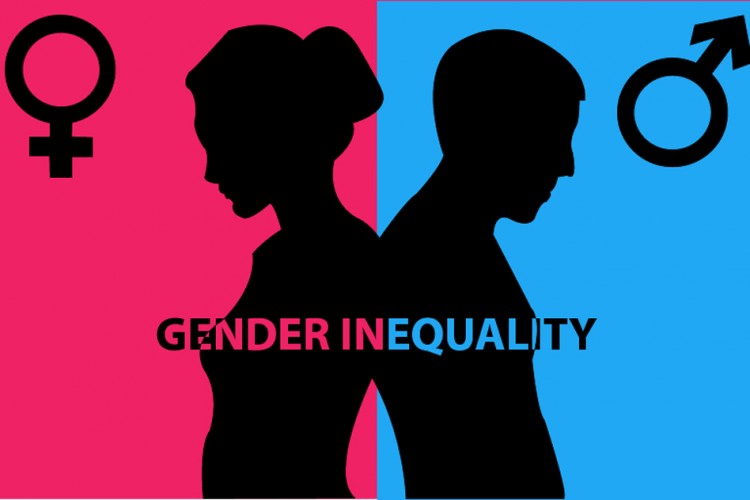
Jul 21, 2016 | critical thinking, gender roles in business, women
Not long ago I spoke with the leader of a small professional firm about diversity and inclusion concerns within her organization. She — like many of her peers — are baffled at why their firm appears largely unchanged after implementing countless diversity programs and affinity groups, including one for women, another for the LBGT employees, another for African American employees and more. All well-intentioned efforts, but making little difference. Here’s why affinity groups aren’t working As the firm’s principal continued to lay out their affinity groups — connecting African American employees with other African American employees, connecting women with other women, and connecting LBGT employees with others like them — I thought of SeedsOfPeace.com. This is a program that sends teenagers from communities in conflict (i.e. Israeli teenagers and Palestinian teenagers) to camp together to build respect, relationships and leadership skills. Rather than continue in the silo-ed thinking so pervasive in corporate America today — and represented by these affinity groups that are entirely lacking diversity within— organizations would do well to follow the example of Seeds of Peace. It is always the cross-polination of ideas and respect — only born from relationship and interaction— that begins to erode the real enemy to corporate diversity and inclusion: unconscious bias. Affinity groups do the opposite, actually encouraging people to flock together in a group designed to eliminate diversity. Working further against true inclusion, these groups define members by their “qualifier:” woman, gay, black, instead of by their skills, interests, achievements or even corporate role. While strong relationships and unity are built within each affinity group, the divides between these groups...

Mar 11, 2016 | gender roles in business
It took until only recently for the mass media to echo what I’ve been speaking, thinking and writing about for years: silo-d thinking is at the root of so many corporate ills, not the least of which is too few women at the top of almost any industry. As I advocated for various solutions around eliminating unconscious bias, I focused on what I called the “two-gender” solution, the thinking being that gender silos (women’s affinity groups, old boys club) promote exclusion rather than inclusion. And, while it’s critical to have awareness in the workplace, the real change will only happen when we socialize our daughters…AND OUR SONS…differently. I wrote about this in an article titled, “The Two Gender Solution.” Of course, the hands of time continue to turn and the evolution of our culture should continue to challenge our thinking. I know my thinking shifted as my awareness increased: as we enter Women’s History Month, everyone would benefit if leaders and individuals took this conversation to the next level to reflect reality. We’re talking an ALL gender solution. All, as in male, female and everything in between. We can’t have an inclusive corporate culture until we acknowledge and adopt this thinking. I began discussing the changing complexion of the American workforce in 2010, but six years later we now have the opportunity not only to employ and embrace different cultures and different generations, but also to do the same for the whole spectrum of sexual identity. Now more than ever, we cannot afford silo-d thinking. The marketplace is demanding inclusion… a leadership model that blends the best of all...

Mar 11, 2016 | gender roles in business
It’s Women’s History Month, 2016. For more than a decade, I’ve been working and waiting expectantly for the paltry 17% of women in top leadership positions to increase. In the beginning, the more attention the mainstream media gave this topic, the happier I was. When a new book for women in leadership was released, I read it with high hopes. When a new female CEO took to the airwaves to espouse the importance of having more women at the top, I championed the cause. But to what end? We’ve ‘leaned in’, ‘cracked the confidence code’ and discussed the ‘feminine mystique.’ But the needle stays stuck at 17% . And all the talk? Well, it has been largely palliative and — as the numbers prove — ineffective. So, today I echo what I wrote back in 2014. Ladies, Take Your Seats. Figuratively. Literally. Read the article — HERE — that acknowledges the corporate cultures and mores that — yes — make it more difficult for professional women to ascend to leadership but also challenges women to own their part… and do their part. Instead of waiting for permission or the invitation (most of the time, it’s not coming!) simply sit down. Real work. Real results. Real...

Aug 13, 2015 | critical thinking, gender roles in business, personal development, women
Last month, Good Morning America did a story on The Surprising Reason Girls Aren’t Learning to be Leaders. (See the clip here). In it, the experts weighed in on the biases girls still face — from many sources including parents, teen boys and even from each other. The clip and accompanying article offered some solid tips, including checking our own biases as parents, assigning chores in less traditional ways, and watching the words we use toward our children — and others. In doing so, they touched on something great when they mentioned “changing things up at home” and assigning boys some caregiving chores versus the more traditional “mow the lawn” assignments. I wish they’d gone further into this critical component to changing the insidious biases so deep rooted in the world — how we raise our sons. Here’s my comment on their post, reprinted for you: “While there’s plenty of responsibility for women to shoulder in the march toward assuming leadership positions, legislating the suspension of bias is useful only in the most superficial way. The fact is that the worst biases are insidious, so deep rooted that they start at birth. So, yes we should check our biases about girls — and those are only the ones we see — BUT nothing will change significantly until we change the way we raise our sons. This equation now has multiple variables (our understanding of gender and sexuality is changing as we speak so it’s no longer about a dyad) and ultimately this mandates an #allgendersolution” I’d love to know your thoughts, so please post in the comment section...

Jun 7, 2015 | critical thinking, gender roles in business, leadership, personal development, women
So far in this article series, we’ve discussed: why the current efforts thrown at increasing the number of women leaders aren’t working the three problems women professionals encounter when moving up the ladder how women can better make themselves heard Now, it’s time to create a real world solution so women (professional women) will not just be heard but heeded in the boardroom heeded in the boardroom. The not-so-obvious solution: building a powerful sphere of influence. Don’t reduce this article to something that is simply about “networking.” Building a sphere of influence is not the same thing as garden-variety networking at all. Largely indiscriminate, typical networking encourages us to cast our net a mile wide but an inch deep. When we do that, we don’t get the prime catch, we get other random stuff in the mix— smaller fish, a boot, used tires, etc. There’s nothing random about building a professional sphere. Building a professional sphere is serious and deliberate work that has as its objective fewer but deeper relationships which you continue to nourish and cultivate throughout your career. It is never too early to start this lifelong career strategy. Start with where you are by answering this question: If I were to be most deliberate in building a professional sphere, which 2 people would I begin to pursue and which 2 people will I stop pursuing or investing...

May 7, 2015 | confidence, gender roles in business, leadership, personal development, women
Women need to be respected at work. The most direct path to generating such respect, while rarely discussed, is all about creating a compelling personal brand. What’s the connection? Both put a premium on trust and consistency. Aside from your ability to communicate effectively, deliberately creating a brand that emanates from your core values will yield the sharpest tool in your toolbox. Become a truly effective communicator, and people may listen. You will be heard. But, to inspire people to follow, perform for and invest in you, you’ll need their respect. A professional’s brand is her word. So, what IS your professional brand? Have you given this any thought? If not, here’s a great place to start: Understand that a great brand stems from core values. Make a list of your most fundamental values and beliefs. These should be values that without which, you wouldn’t be who you are. They need to be rock solid, with all else stemming from there. Next, list your competencies, those for which you want to be known. Finally, create your own visual, your own schematic of what your brand looks like. As an example, I think of mine as a golf ball that encases… a hard super ball center but then has all those rubber band things wrapping around and around it. But that’s mine. What’s yours? Grab an accountability partner and do this exercise. It will change the way you show up at work. So far in this article series, we’ve discussed: why the current efforts thrown at increasing the number of women leaders aren’t working the three problems women professionals encounter when...







 Dani Ticktin Koplik —
Leadership consultant, executive coach, change agent and passionate professional development expert and speaker. You can learn more about Dani and her clients by visiting dtkBio page.
Dani Ticktin Koplik —
Leadership consultant, executive coach, change agent and passionate professional development expert and speaker. You can learn more about Dani and her clients by visiting dtkBio page. 